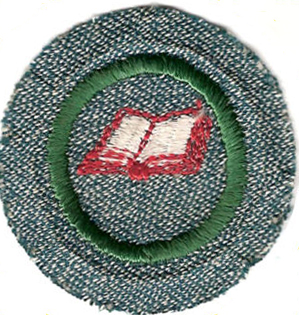It is the 1930s, the Great Depression has started, and we begin another chapter in the story of libraries.

Our two previous articles recounted earlier reading rooms and libraries on Mendocino’s Main Street, and then in the building on the corner of Ukiah and Lansing Street. Since its construction by W. H. Kelley in 1887, this structure went by a different name with each succeeding generation – Skating Rink Hall, Tivoli Hall, Temperance Hall, Gymnasium Hall.
It became Hee’s Hall when George Hee bought out Joe Nichols’ pool rooms and skating rink for $100 in 1919 and operated his own place there, which eventually became “The Sweet Shop” and then a grocery store.
It was in one of Mr. Hee’s back rooms that another group was formed to carry forward the library’s torch. Its members were not businessmen intent on civic improvements, nor were they interested in abolishing alcohol or promoting religious thought, as previous library sponsors were. They were the Girl Scouts.
On December 2, 1930, sixteen girls met in the former reading rooms and organized Girl Scout Troop #1. The first year was spent recruiting new members, learning to tie knots, going on fun field trips, and other typical scout activities.
But by the next December, the young “Scribe,” who reported the troop’s weekly activities in the Beacon, was announcing their intention to “enlarge their library and make a public library out of it.” Three months later, in 1932, they opened what they called “The Mendocino Public Library” in their Scout rooms on the south side of Hee’s Hall.
The girls explained in their notice that “it cost ten cents a year to be a member of the library. One or two books may be taken out for one week. Five cents will be charged for any book that is overdue. A book may be renewed if not read in one week. Just come and have a look at the books even though you don’t want to join the library.”
With these procedures in place, the girls had started, and then proceeded to operate, what we would recognize today as a circulating library. Their acquisitions department included a regular book loan arrangement with the Greenwood library, as well as canvassing the community for book donations, among them the Mendocino Study Club.
Weekly Scout meetings allowed time for book repair and pasting check-out slips into the volumes. This was all organized by their youthful librarian and her assistants, who opened the library to the public each Saturday afternoon.
GIRL SCOUTS TO TRY FOR BRANCH LIBRARY read the bold 1936 headline. The story said that Mendocino’s Troop #1 was preparing a petition addressed to the County Librarian asking for a branch library that would serve an area covering Little River, Albion, Greenwood, and eastward to Comptche. The endeavor was led by 16-year old junior Girl Scout leader and librarian Frances, daughter of Chester and Susie Walbridge.
No branch library was built at that time, and the Scouts continued their own library at the old hall for at least another four years. However, their petition appears to have borne fruit for later years. We read in a 1940 “Hilltop Volcano” column that the Mendocino High School had received a new box of books from the county circulating library and that “any person out of school who would like to take out a borrower’s card may do so. The library books may be taken out for a week.”
While not a stand-alone branch, the efforts of the Girl Scouts seemed to have brought a higher level of library services to the community.
Our next entry into the log book of Mendocino’s libraries skips through most of the war years and lands on June of 1947, when Daisy MacCallum gifts 300 books for the “Mendocino Study Club Library,” the immediate predecessor to the library we enjoy today.